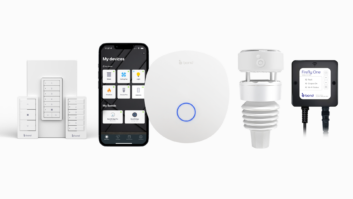New York – Navigon
said it submitted its U.S.
navigation app to Apple’s App Store about two weeks ago and expects
approval “in the next several weeks.”
The company’s
iPhone solution provides turn-by-turn navigation similar to that of a personal
navigation device (PND), including views of highway signs and lane guidance,
said the company.
Navigon president
Michael Roach said final U.S. pricing of the app has not yet been determined,
although a European Navigon version launched in June on the App Store was at an
introductory price of the euro equivalent of $99 and now sells for $139. Roach
said, “$99 was very successful.”
With TomTom about
to debut an iPhone app this summer, the
pricing of GPS smartphone apps is being closely watched by suppliers of stand-alone
PNDs that will compete with the apps. TomTom has yet to disclose the price of
its iPhone app.
Roach believes an
“onboard” turn-by-turn app where the maps reside on the phone (and are not
automatically updated) could become disruptive to the PND market at $99. But he
noted, “Consumers may find that they enjoy navigation, so it might help PNDs
grow and penetrate more consumers.”
AT&T/TeleNav
recently released an iPhone
app that requires a $9.99 monthly fee, costing the user about $120/year, about
the same price as an entry-level PND. The AT&T app, however, uses an “off-board”
service, where the maps are pushed from an off-board server, so users get updated
maps.
Smartphones and
netbooks equipped with turn-by-turn GPS pose a growing threat to PNDs, which
are on a trajectory to become $99 commodity items with diminishing margins
unless suppliers can find a way to add value to the devices.
Currently, smartphones
have reached a 19 percent
market penetration in the U.S., according to Palm. But many of the GPS apps
for smartphones have been less reliable than PNDs to date. “Navigation on the
iPhone hasn’t had a smooth start, as there are performance-tuning issues. The
error radius can be huge from Wi-Fi hot spots, and in urban areas it is easy to
get bad data points,” said iSuppli analyst Danny Kim.
Navigation on a
smartphone is also interrupted when a call comes in, and off-board navigation
can be disrupted by tunnels and other obstructions.
Garmin said it
expects the PND “to continue to grow at a healthy rate for the next few years,
while the handset navigation and subsidized netbook markets are developing,”
according to a spokeswoman.
The NPD Group
reported that PND year-to-date sales through May are up 8 percent in units but
down 22 percent in dollars, as average selling prices have dropped to $177 for
the period, down from $243 during the same five months last year.
Navigon said it
will also introduce a second “Lite” version of its iPhone app with points of
interest but no turn-by-turn directions, and the company is also working on a
car mounting kit.
iSuppli suggested
that TomTom’s app would be most competitive with PNDs if it included the TomTom
Live and other location-based services, including an HD
traffic service offered in Europe.
“The only
competitive advantage of using a phone is you can utilize the connectivity. If
it’s just onboard [with] no dynamic content service, it’s just inferior to the
PND because of the smaller-sized screen,” said Kim.













